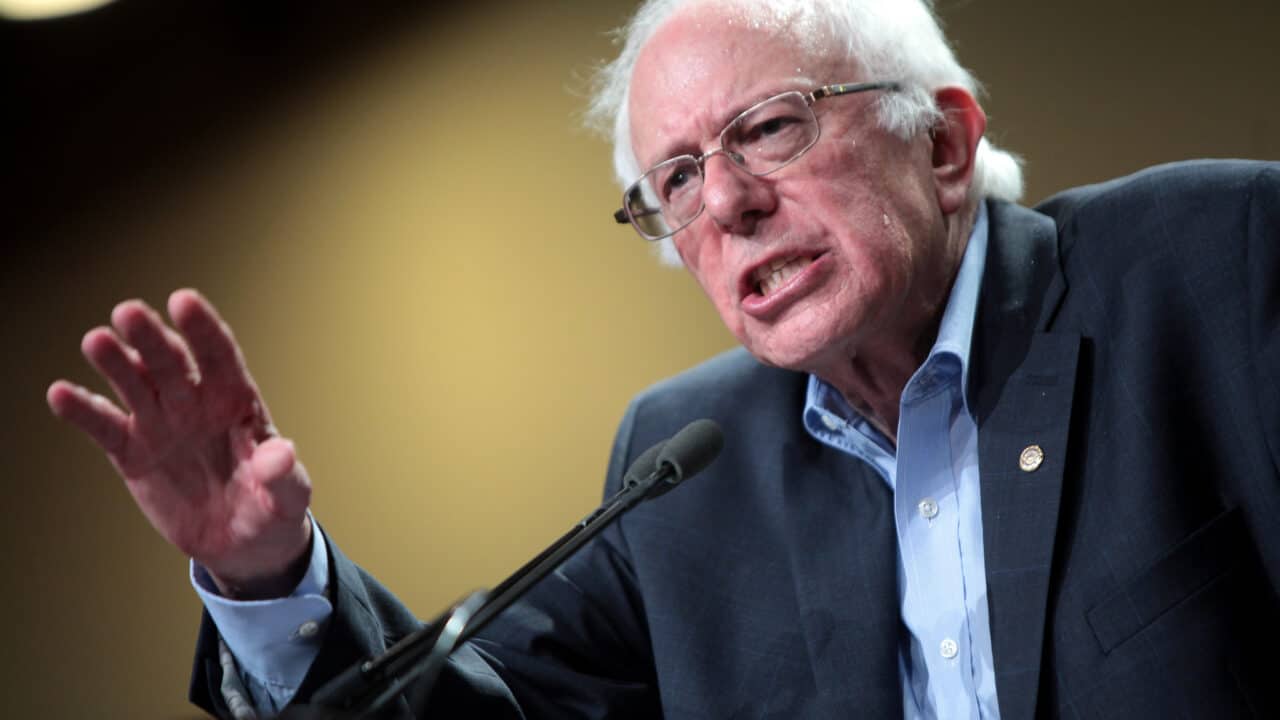 "Bernie Sanders" by Gage Skidmore on Flickr is licensed under CC BY-SA 2.0: https://bit.ly/3Yk2Vp7
"Bernie Sanders" by Gage Skidmore on Flickr is licensed under CC BY-SA 2.0: https://bit.ly/3Yk2Vp7
Today, the U.S. Senate Committee on Health, Education, Labor, and Pensions (HELP), chaired by Senator Bernie Sanders (I-Vt.), will hold a hearing entitled, “Why Does the United States Pay, by Far, the Highest Prices in the World for Prescription Drugs?”
Notably, Panel 1 of the hearing will include the CEOs of three pharmaceutical companies: Johnson & Johnson, Merck, and Bristol Myers Squibb.
During this hearing, we expect progressive members to push for destructive policies like international reference pricing and the misuse of Bayh-Dole march-in rights. These policies would harm patients, manufacturers, and the American healthcare system.
This hearing is especially frustrating in light of recent, rising tensions with foreign competitors. Why are Democrats focused on flogging, and eventually hindering, American companies? Why aren’t Democrats instead focused on getting price controls lifted in other countries – restrictions which are actually to blame for price disparities?
The Left’s “solutions” to high drug prices would leave Americans with little access to new cures and treatments, would neuter medical innovation, and would eliminate America’s competitive edge in the development of new drugs and therapies.
Instead, the Biden Administration should be willing to fight for Americans on the international stage. The President should deploy trade negotiators to curb the trend of other countries buying our innovations at artificially low prices, requiring Americans to foot the immense costs of research and development.
Of course, this would require the Left to be more interested in solutions than damnation, however misplaced. That, unfortunately, is a tall order.
Adopting international reference pricing would stunt medical innovation, leading to fewer cures and healthcare shortages for American patients.
Various kinds of international reference pricing bills have been introduced in the past decade, including legislation from Chairman Sanders himself. All attempt to artificially lower the cost of lifesaving medicine using government force. All would reduce prescription drug access for American consumers and suppress market competition, innovation, and investment.
These proposals reference price U.S. drugs based on the prices in Canada, the United Kingdom, France, Germany, and Japan. Foreign countries frequently utilize a range of arbitrary and market-distorting policies to determine the cost of medicines – by definition, such approaches are price controls.
While the idea of simply “lowering prescription drug costs” through blunt force can be attractive, behind each of the drugs subject to price controls are companies that do vital work in medical innovation. When extorted by the U.S. government, they will have to make up lost costs elsewhere: reducing investment in R&D projects.
Price controls radically increase the financial risk companies take on when they start to develop new drugs. Notably, in an industry like drug development, the risk is already very high.
During an average drug development process, a manufacturer must invest an average of $2.6 billion and spend 11.5 to 15 years in research and development. Even so, most drug development programs fail. If a drug succeeds, it is unlikely that it will ever recoup its R&D costs. One study in the Health Economics journal found that 80 percent of new drugs made less than their capitalized R&D costs.
Proposals to import foreign price controls will suppress competition and innovation, harm American competitiveness and investment, and should be rejected by Congress.
Misusing Bayh-Dole march-in rights would also stunt innovation, in addition to its being an abuse of power, as the federal government would be operating outside of its authority under the law.
The Patent and Trademark Law Amendments Act, more commonly known as the Bayh-Dole Act, passed with bipartisan support in 1980. Bayh-Dole allowed academic institutions and businesses to keep ownership of their IP to encourage medical innovation.
The law also included a provision allowing the federal government, if it funded the research, to “march-in” and relicense the institution’s IP in very narrow circumstances, such as if the licensee was not making “good-faith efforts to develop the technology into a usable, real-world product.”
Lawmakers have long encouraged presidents to use march-in rights if they deem a price of a drug “too high.” Previously, federal agencies have rejected this blatant misreading of the law.
Now, the Biden Administration is seriously considering this “reading” of the law. Recent Draft Framework by the National Institute of Standards and Technology (NIST) would direct federal agencies to consider the price of a product when evaluating its authority to exercise march-in rights. This would be in direct violation of the intent of – and explicit language in – the Bayh-Dole Act.
Further, if innovators can expect their property rights to be seized on the government’s arbitrary determination of what the price should be, then this certainly would quell medical innovation.
Contrary to the Left’s assertions, America is one of the best places in the world to receive care.
According to research by the Galen Institute, 290 new medical substances were launched worldwide between 2011 and 2018. The U.S. had access to 90 percent of these cures, a rate far greater than comparable foreign countries. By comparison, the United Kingdom had access to 60 percent of medicines, Japan had 50 percent, and Canada had just 44 percent.
Price controls utilized by Europe delayed new drugs coming to market by an average of 14 months.
In just the last 20 years, the gap between European and American investment into pharmaceutical R&D has increased by 1,000 percent in favor of the U.S.
The U.S. is a world leader in research and development because the healthcare system rejects European-style price controls and regulations, and encourages innovation. As a result, a majority of new medicines are developed and launched in America.
This innovative environment is enormously beneficial to the long-term well-being of Americans and the efficiency of the U.S. healthcare system. In addition, the investment required for research and development of medicines leads to more high-paying jobs and a stronger economy.

